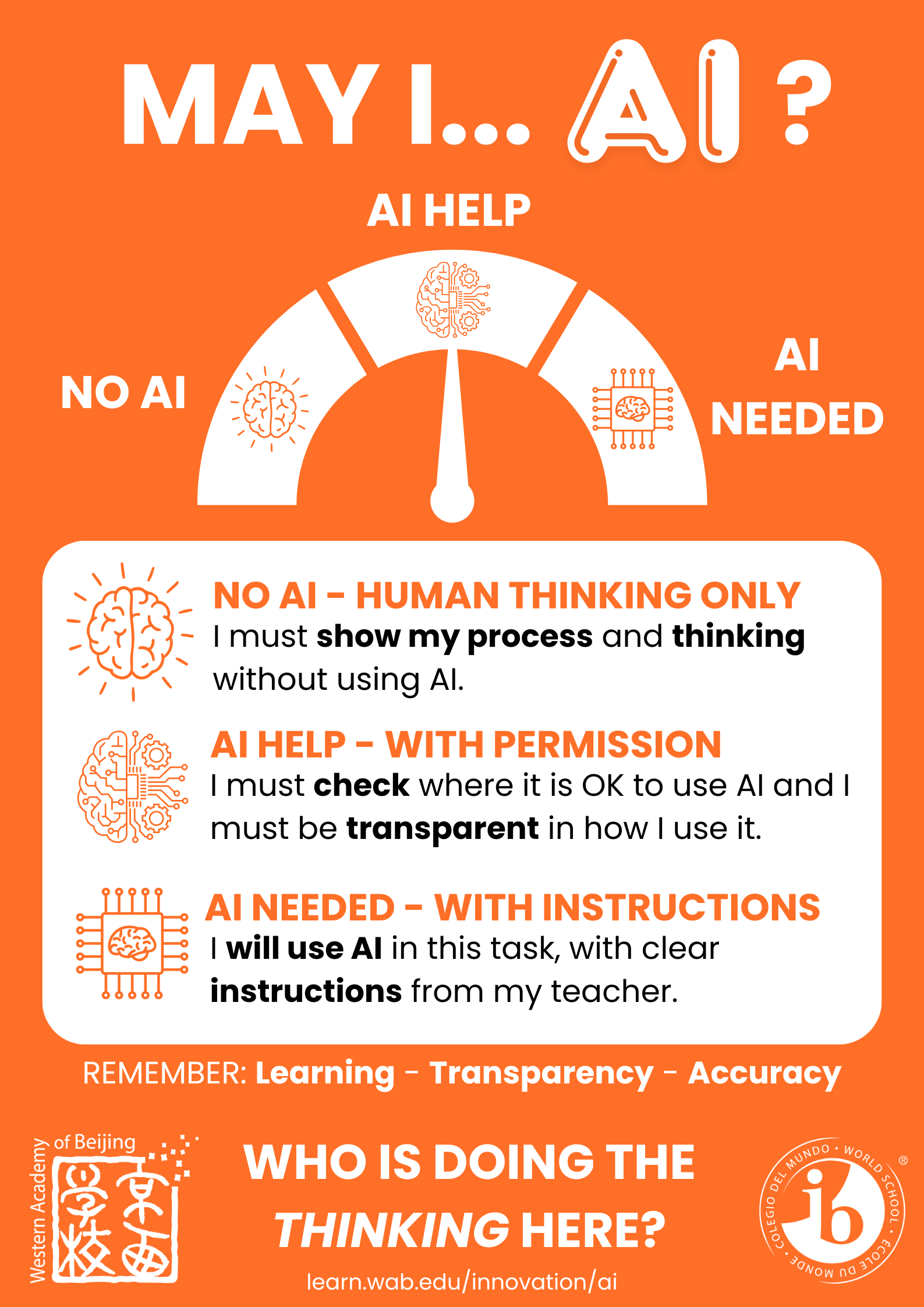

This is an in-depth guide on AI in Education for WAB.
The emergence of Generative AI (GenAI) tools is having an impact on teaching, learning and our students' futures. At WAB, we have been researching GenAI since before the release of OpenAI's ChatGPT in November '22. This guide presents a curation of guidance, research and resources for our Faculty. If you are curious about AI, reach out to your Library & EdTech Teams, Stephen or Kevin.
AI Philosophy & Policy at WAB


IB & Academic Integrity
How Can I Learn About & Adapt with AI?
What About the Ethical Issues of AI?
How Can I Teach with AI? Tools & How-Tos.
Who Else Are We Supporting with AI?
What If I Want To Go Deeper with AI?
Icon images generated in Ideogram.